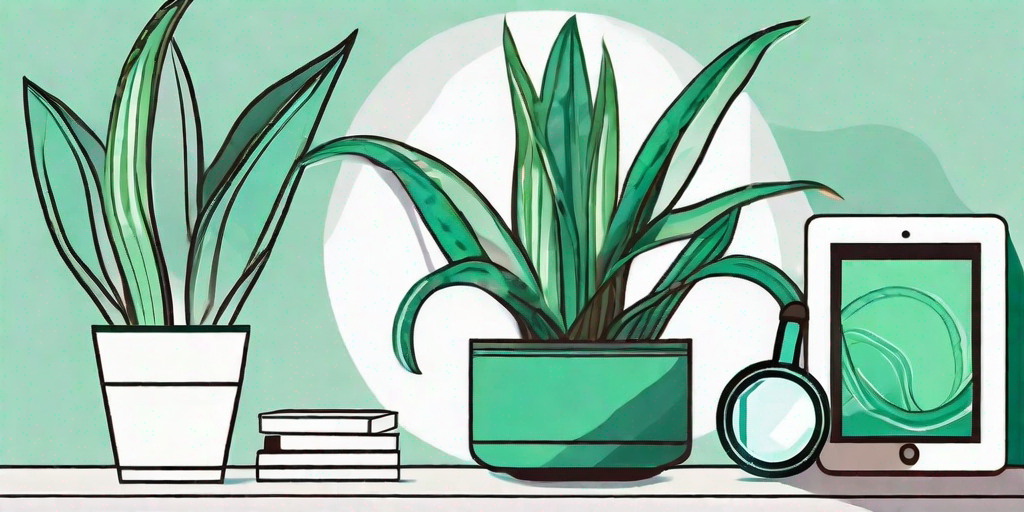
Snake plants, also known as mother-in-law's tongue or Sansevieria, are a popular choice for indoor greenery. Their striking, upright leaves and low-maintenance nature make them a favorite among both novice and seasoned plant parents. But what happens when those usually rigid leaves start to curl? It's enough to send a shiver down the spine of even the most stoic gardener. Fear not, dear reader, for we're about to embark on a thrilling journey to unravel this botanical mystery.
Understanding the Snake Plant
Before we dive into the curling conundrum, let's get to know our green friend a little better. The snake plant is native to West Africa and thrives in warm, dry conditions. It's a hardy plant that can survive with little water and light, making it a perfect companion for those of us who may forget to water our plants or live in less than sunny climes.
Snake plants have long, upright leaves that can range in color from dark green to silver. The leaves are thick and fleshy, storing water for those dry spells. They're also excellent air purifiers, removing toxins like formaldehyde and benzene from the air. So, not only do they look good, but they're also working hard to keep you healthy. Talk about a win-win!
Why Do Snake Plant Leaves Curl?
Now, onto the main event: the curling leaves. There are several reasons why your snake plant's leaves might be curling, and it's usually a sign that something's amiss. Don't panic, though. With a little detective work and some TLC, we can get your plant back on track.
Common causes of leaf curling include overwatering, underwatering, temperature stress, and pest infestations. Let's explore each of these in more detail.
Overwatering
Despite their love for a good drink, snake plants don't like to have wet feet. Overwatering can lead to root rot, which in turn can cause the leaves to curl. If the leaves are yellowing and the soil is soggy, you might be dealing with an overwatering issue.
The solution? Let the soil dry out completely before watering again. And remember, it's better to underwater than overwater when it comes to snake plants.
Underwatering
On the flip side, underwatering can also cause leaf curling. If the leaves are curling and the soil is bone dry, your plant might be thirsty. Give it a good drink, but be careful not to overdo it. Remember, balance is key.
Temperature Stress
Snake plants like it hot, but they don't do well with sudden temperature changes. If your plant is near a drafty window or a heating vent, it might be experiencing temperature stress. Try moving it to a more stable environment and see if the curling improves.
Pest Infestations
Lastly, pests like spider mites and mealybugs can cause leaf curling. Check the undersides of the leaves for any signs of these pesky critters. If you spot any, treat the plant with an insecticidal soap or neem oil.
Tips and Tricks for a Healthy Snake Plant
Now that we've covered the common causes of leaf curling, let's look at some tips and tricks to keep your snake plant healthy and happy.
Firstly, make sure your plant is in well-draining soil and a pot with drainage holes. This will help prevent overwatering. Secondly, place your plant in a spot with indirect light. While snake plants can tolerate low light, they prefer bright, indirect light. Finally, keep an eye out for pests and treat any infestations promptly.
Frequently Asked Questions
How often should I water my snake plant?
There's no one-size-fits-all answer to this question as it depends on the conditions in your home. However, a good rule of thumb is to let the soil dry out completely before watering again. In the winter, you can reduce watering to once a month.
Can snake plants survive in low light?
Yes, snake plants can tolerate low light conditions. However, they prefer bright, indirect light. If your plant is in a low light area, you might notice slower growth.
What type of soil is best for snake plants?
Snake plants prefer well-draining soil. A mix of potting soil, peat moss, and perlite or sand works well. You can also buy a pre-made cactus or succulent mix.
Conclusion
So there you have it, the mystery of the curling snake plant leaves, solved! Remember, the key to a healthy snake plant is balance. Not too much water, not too little. Not too much light, not too little. And always keep an eye out for those pesky pests. Happy gardening!















